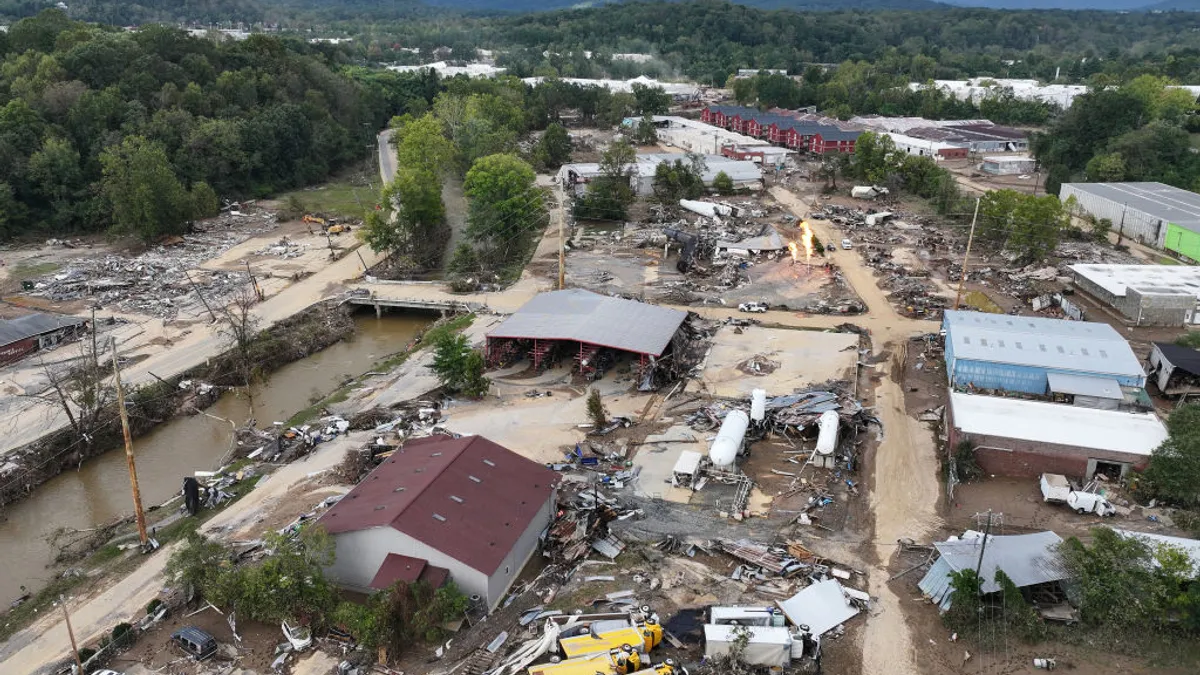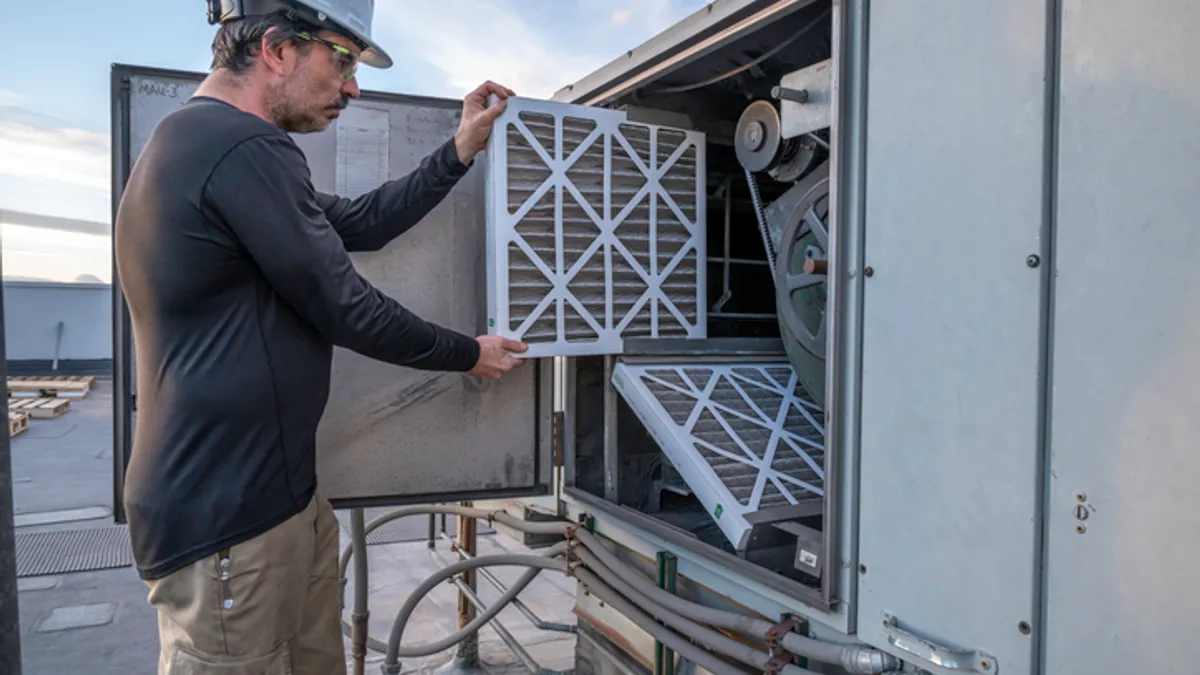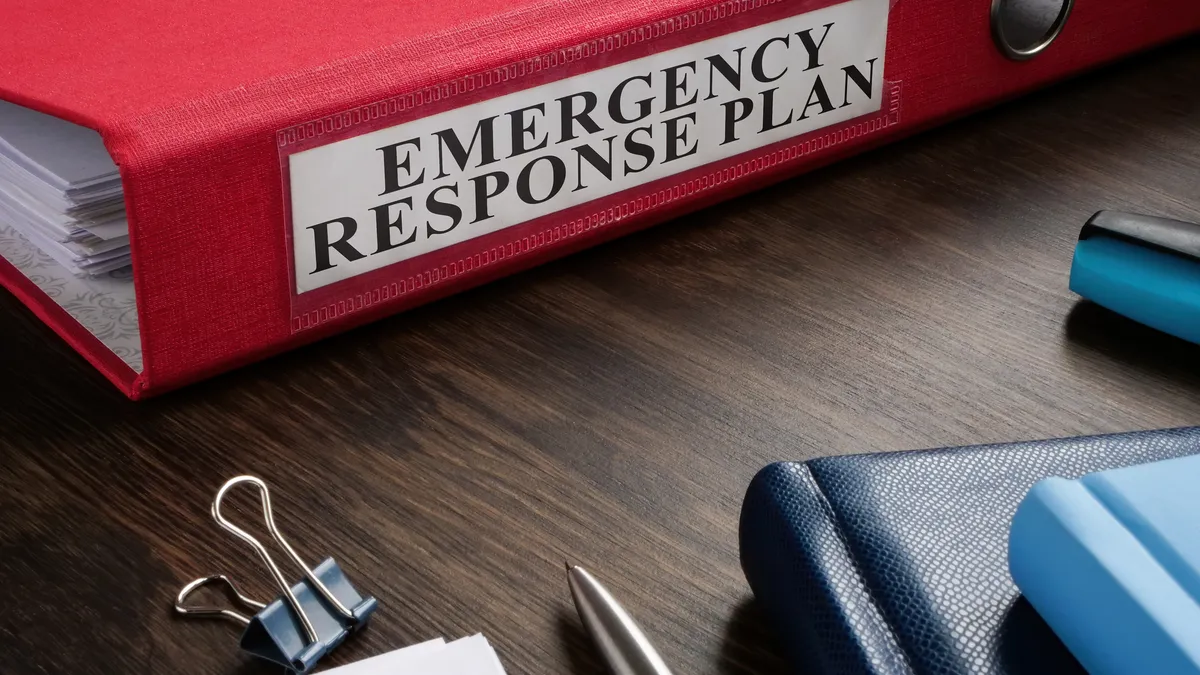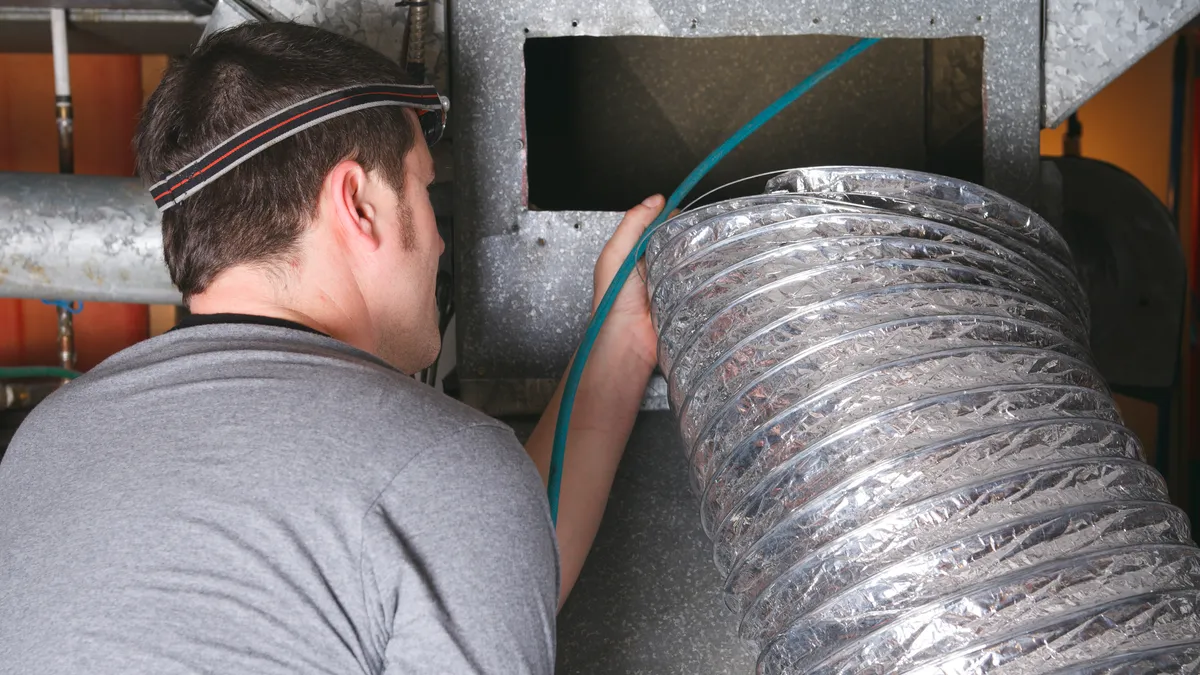Hurricane Helene made landfall as a Category 4 hurricane on Sept. 26, unleashing widespread destruction in six U.S. states. Homes were destroyed, roads torn apart and power lines severed, plunging entire regions into darkness. The storm claimed 227 lives, as of Saturday, according to AP News.
While much of the damage took place in North Carolina and Georgia, communities continue to deal with the aftermath of the storm, from Florida and Tennessee all the way to Virginia up north.
Erin Haglund, managing director of financial services at JLL, pointed to varying degrees of flood damage, water penetration, mold remediation, wind damage and even catastrophic failure to some buildings in regions such as Atlanta and Florida.
“The crisis is severe in these communities. They really didn’t contemplate and were not prepared for an event of this magnitude,” Haglund said in an interview. “[And] when you look at the West Coast and you see a lot of earthquakes, the design of those facilities and the maintenance of those facilities really contemplated seismic forces, wind forces and flooding in communities. These buildings did not.”
Many of JLL’s clients are running into issues related to labor and acquiring the resources needed to assess the damage, according to Haglund. In many cases where it's catastrophic, “we can’t even access some of those sites, and so it’s going to take time for us to even get in and really understand the stage and triage or assess what we think the response is going to be,” Haglund said.
Building automation systems can offer a way to gauge the effects remotely, sending alerts that enable operators to assess damage. “If the building is still responding, then you’re going to get that data,” Haglund said. “Typically when we have these events, we stage crews, we stage our vendors [within] a certain radius of the impact site so we’re able to get in and do site inspections.”
Partnering with the Federal Emergency Management Agency and the U.S Army Corps of Engineers is crucial to navigate events that have caused catastrophic damage to infrastructure and where access is restricted, so that they can take the lead in assessing the situation, coordinating with vendors and reporting on the damage to guide further recovery efforts, Haglund said.
During this time, it’s important to have business continuity and disaster response protocols in place, ranging from proactively monitoring weather systems to staging and triaging, Haglund noted.
“What do we do? What’s the action plan? That can be everything from remediating an existing partial building all the way to catastrophic damage. How do we pivot and move towards a more capital conversation around rebuilding and then, how do we manage the business continuity of that company while they don’t have a physical structure in place?” she said.
Before an extreme weather event, operators should first conduct a business impact analysis, according to Facility Engineering Associates President and COO Laurie Gilmer, who spoke at a session at IFMA Facility Fusion in May. This business impact analysis is “what we think through,” Gilmer said.
According to Gilmer, questions operators should ask include: “What are the essential functions that we do in our business, and how do we make sure that they are preserved? How are we going to get back to regular business? Are we responding in the moment? How are we looking long-term?”
A cloud-based computer maintenance management system with an asset database can ease the burden of managing documentation after a disaster, Chris Burns, senior product manager at Incident IQ, said in an email.
“FMs must submit the same documentation several times over to different agencies and governing bodies," Burns said. They often must provide details such as labor hours, costs, prior conditions and maintenance records, as well as photographs of the assets.
Gilmer also pointed to the importance of training and exercising, noting that if an emergency and business response plan is stuck on the shelf, then “it’s really not going to help your team,” and that teams should commit to doing tabletop exercises at least once a year to ensure that everyone is prepared.
Additional considerations for these plans include how to continue operations if people aren’t able to go to a facility for an extended duration, which alternative sites are available, and how your team will handle communications, Gilmer said.
“Think of essential functions as being the top few things that you need for your business to survive. What can we get by with? What’s the absolute bare minimum we have to maintain and then how soon do you need to get those essential functions back up and running?” Gilmer said.
While operators may not have been able to fully prepare for a situation like Hurricane Helene, it is critical to learn from these events and build on existing plans, “so that we are better prepared next time, and understand how to be flexible inside the situation,” Haglund said. “Pivot and restage in a different way. Whatever that looks like, it absolutely needs to be contemplated in the changes to those plans.”
Staying on top of preventive maintenance, and "transparency around which buildings and equipment are in good working order and where vulnerabilities lie" can also help businesses adjust operations before or after an extreme weather event, Incident IQ's Burns said.
In addition, operators must be prepared to leverage their partnerships and technology effectively, Haglund said. “Think about your building management systems,” she said. “Does it integrate seamlessly, end-to-end, in terms of the way the building provides you data? Because time is of the essence in these situations, and it is most precious when it is devastating.”
Editor’s Note: This story has been updated to include comments from Chris Burns, senior product manager at Incident IQ.
Correction: A previous version of this story misstated Erin Haglund’s title. She is the managing director of financial services at JLL.





















